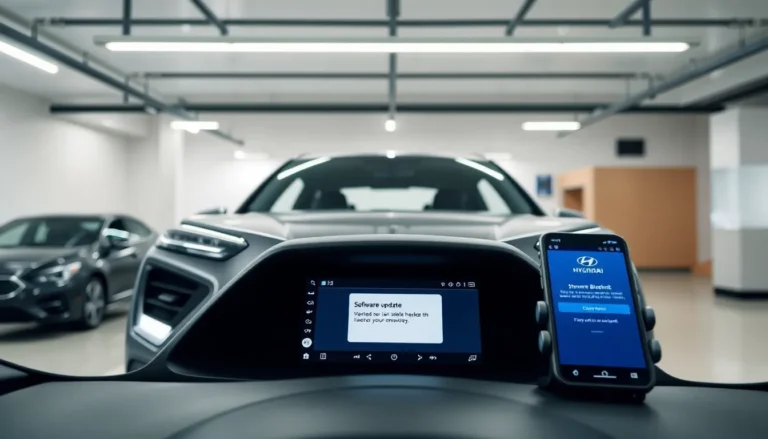In a world where a cat video can top the news cycle quicker than a presidential address, viral culture isn’t just a buzzword, it’s a phenomenon that shapes our digital existence. Think of it as the internet’s equivalent of a party where everyone’s vying for attention, and the next big thing is just a meme away. This article will take a deep jump into the ins and outs of viral culture, what it is, how it works, and how brands can harness its power. Let’s unravel the web of this digital age and see what makes something go viral. Spoiler alert: it’s not just about kittens.
Table of Contents
ToggleUnderstanding Viral Culture

Defining Viral Culture
Viral culture refers to the rapid spread and mass adoption of content, trends, or ideas across social media and other digital platforms. Think about how a single tweet can spark a meme or how a TikTok dance can become a worldwide sensation overnight. Essentially, viral culture is the digital echo chamber where ideas bounce around and gain traction faster than you can say ‘let’s go viral.’
Key Characteristics of Viral Culture
Several features give viral culture its unique flavor. First, relatability is key. Content that resonates with a wide audience stands a better chance of going viral. Humorous, heartwarming, or shocking elements often drive engagement. Second, simplicity matters. In a fast-paced digital world, easily digestible content, think short videos or succinct tweets, tends to gain the most traction. Third, a clear call-to-action can propel shares. Viral culture thrives on community involvement, often inviting audiences to join in and replicate etc., which amplifies the reach of any given content.
The Role of Social Media in Viral Culture
Platforms Enabled by Viral Trends
Social media platforms are the breeding grounds for viral culture, serving as both the stage and the audience. Take TikTok, for instance. This platform thrives on short, catchy videos that quickly ignite trends, allowing users to jump on what’s trending and make it their own. Then there’s Twitter, where hashtags can elevate mundane moments into viral sensations within minutes. Instagram, with its focus on visuals, enables memorable moments to spread swiftly. Each platform has its unique capabilities that influence how content circulates. Knowing the strengths of each social media channel can give creators an edge in producing shareable content.
Case Studies: Successful Viral Trends
Analyzing Famous Viral Moments
Let’s look at some emblematic cases of content that took the internet by storm. Remember the ‘Ice Bucket Challenge’? This campaign not only raised money for ALS but also generated millions of videos across social media, encouraging people to share their own experiences. Another instance is the dance challenges stemming from Bruno Mars’ hit songs, where fans from all walks of life proved they could bust a move. Analyzing these phenomena reveals a formula: engaging content plus emotional resonance equals virality.
Impact on Popular Culture and Society
Successful viral trends rarely exist in a vacuum. They often influence broader cultural conversations, redefining what’s trendy and setting societal norms. For instance, trends like “#MeToo” sparked conversations around sexual harassment, demonstrating how viral moments can impact real-world issues, while also promoting awareness and sparking movements across various platforms.
Influence on Marketing and Brands
Adapting Strategies for Viral Engagement
The implications of viral culture can also be seen in marketing strategies. Brands that can tap into these trends effectively often see massive engagement rates. Corny ad spots? So last season. Instead, brands are embracing authenticity, engaging directly with consumers and creating content that resonates genuinely. Think of Wendy’s witty Twitter exchanges or Nike’s use of social movements in their campaigns. These brands don’t just sell products: they embody the culture, making them integral parts of conversations. This is the essence of smart marketing in the viral culture age.
Measuring Success of Viral Content
Metrics and Indicators of Virality
Understanding whether something is truly viral involves analyzing various metrics. Views, shares, and engagements are all crucial indicators. The virality can be assessed through reach, the number of unique viewers, as well as the frequency of shares and comments on social media. Brands and creators also employ Google Trends and analytics to gauge the impact and longevity of a piece of content. Remember, just because a video has a million views doesn’t mean it’s a lasting trend. Relevance and engagement over time are vital metrics to consider.
Challenges in Creating Viral Content
Ethical Considerations in Viral Culture
Creating viral content isn’t without its pitfalls. Ethical considerations must be at the forefront. The pressure to go viral can lead to misinformation or exploitation, especially in trending content that tackles sensitive topics. Understanding where to draw the line between creativity and ethics is crucial for brands and creators. Crafting content responsibly not only protects an organization’s image but also contributes positively to public discourse. The healthier the digital ecosystem, the better the chances for authentic engagement.





